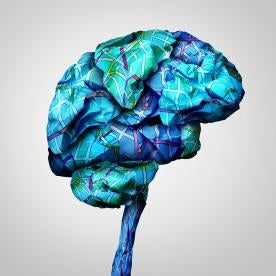In 1848, Phineas Gage, a 25 year old railroad worker, unwittingly became a benchmark of modern neuroscience. Gage was using a tamping iron to pack explosives when a spark ignited the explosive charge, propelling the iron rod through his cheek, behind his eye socket, then upwards through his brain, finally exiting the top of his skull, and landing some distance away. Gage survived, despite the fact that the tamping iron had destroyed much of his left frontal lobe.
While it is reported that Gage never lost consciousness following the accident, his once even-tempered personality changed dramatically thereafter, as noted by John Martyn Harlow, the physician who treated him. Gage’s case became a text book example of how an injury to the brain can produce a change in personality. However, it was also reported that the personality change was temporary and that Gage was able to resume working and normal activity until his death in 1860, 12 years post-injury, as a result of a seizure.
Gage’s case (as well as his skull which was donated to Dr. Harlow by his family) has been studied ever since his death. Most recently, in 2012, researchers combined CT scans of Gage’s skull with MRI scans of typical brains to study how Gage’s brain function could have been affected by the injury he suffered.
Gage’s recovery from the injury to his brain raised many questions and sparked research relating to the brain, its functions, its limitations and its ability to heal. Prior to Gage’s injury, and for some time after, medical professionals believed that the pre-frontal cortex was a “non-functional” area of the brain. His survival and recovery greatly influenced the treatment and rehabilitation of frontal lobe damage.
The frontal lobe controls high level cognitive functions such as planning, initiating, and organizing, as well as personality. When an individual suffers a concussion, or traumatic brain injury (TBI), the frontal lobe is often an area that suffers damage. Most concussions do not result from circumstances as starkly recognizable as Phineas Gage’s. Often, concussions are caused by accidents, sports play, falls, or other incidents involving a blow to the head or other force resulting in the brain impacting the skull. The effects of these concussions, usually classified as “mild” TBIs, may not be immediately or visibly apparent. Nonetheless, high level cognitive function may be affected, including attention, concentration, and short-term memory. Neuropsychological testing can identify individuals with mild traumatic brain injury so that treatment and rehabilitation can take place.
Phineas Gage is proof positive that someone can sustain a traumatic brain injury, despite not losing consciousness.



 i
i


